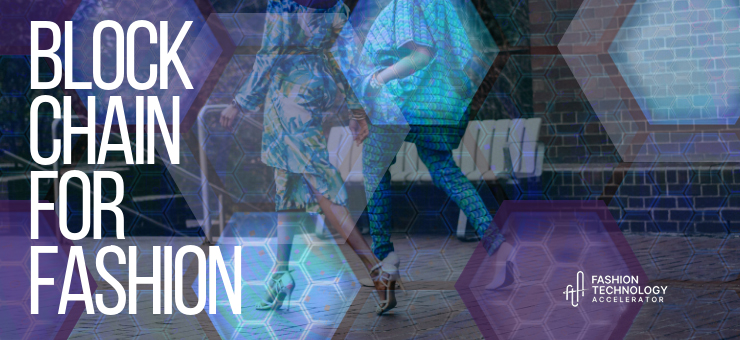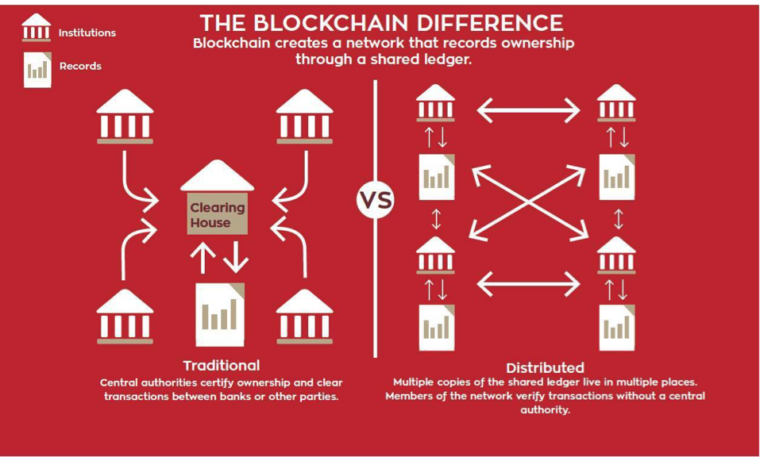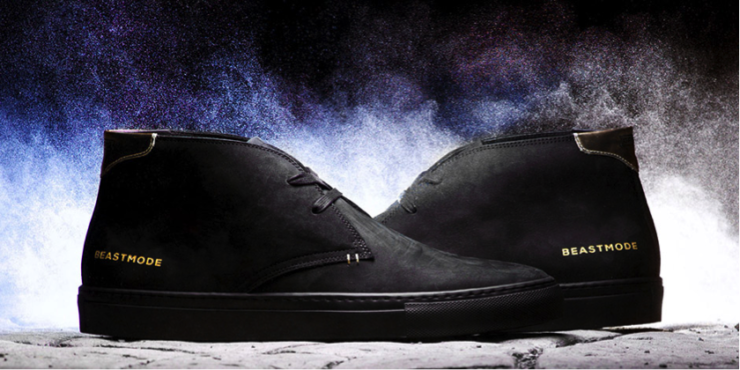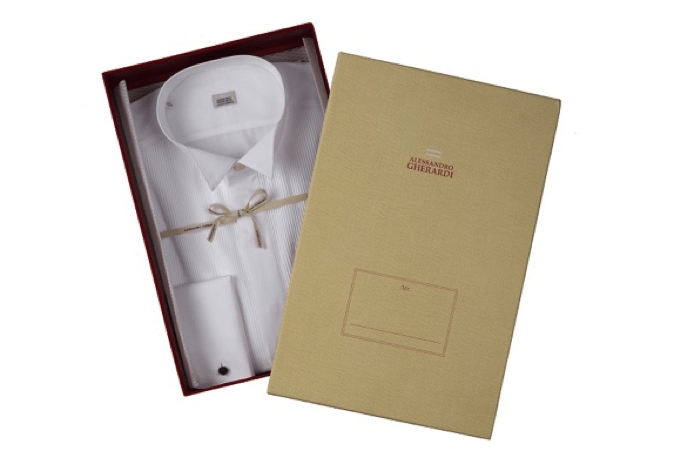
However, are you aware of the definition?

Don & Alex Tapscott in Blockchain Revolution (2016) defined blockchain as “an incorruptible digital ledger of economic transactions that can be programmed to record not just financial transactions but virtually everything of value.”
You may now be wondering who is behind the development of blockchain technology then. Referring to some articles, blockchain was originally created by Satoshi Nakamoto, which turned out to be a pseudonym of a person or group of people. This invention became the backbone of a new type of Internet, with the newly added possibility of sharing digital information without having to worry about being copied. Indeed, blockchain technology is a synonym for more secure transactions.
What are the features that make it so bulletproof? The answer lies in its decentralised database: sensitive information isn’t stored in one single location. On the other hand, the records are public and easily verifiable for each user who has access to the system. This decentralised way of managing data is a secure system that prevents any ill-intentioned individual from corrupting or stealing the information stored or the database itself. Therefore, the mechanism would turn out to be very useful if adopted in industries like financial services, healthcare, supply chain management, and so on.

Here are some of the blockchain functionalities (with practical examples) you may find advantageous for your company.

In the luxury goods industry, counterfeiting has always been one of the most urgent issues. According to a report by Harvard Business Review, the fake luxury merchandise accounts for up to 70% of the $4.5-trillion total trade in fakes. Today, many companies in the luxury arena are still struggling to find a solution to this persistent problem. Some technological attempts that have commonly been deployed to solve it are:
> Serial numbers;
> Watermarks;
> Holograms;
> Barcodes/ QR codes;
> Uses of special inks/ dyes/ papers/ label/ etc.
However, the tactics mentioned above did not result in having a lasting effect in the fight against counterfeiting. Indeed, since many luxury companies’ secret information is stored in a central database, a hacker may simply crack the security systems and manipulate the data or the database, either to create a copy or just to screw up the authentic special code of the products.
To successfully face these cybersecurity issues, fashion and luxury companies could complement the technologies already in use with blockchain platforms. This would lead to a great improvement in the level of security.
A brand that made a relevant step in this direction is BabyGhost. The firm launched its product and collaboration with Vechain at the Shanghai Fashion Week in 2017. In a bid to fight the fake version of high fashion designers’ products, they embedded an NFC or a QR code on each of Babyghost products. By also using an immutable ledger to record transactions, users could verify a product’s authenticity on VeChain’s application by simply scanning it.

Prior to that, a sneaker manufacturer has enacted the transformation. The Greats x Beastmode 2.0 Royale Chukkah was the first consumer product to use a smart tag integrated with blockchain technology, accommodated by Chronicled. The Royale 2.0 is equipped with a smart tag that comprises the digital information and each item’s limited-edition number to prevent their imitation. Users could also interact with exclusive content and other buyers.
Focusing on more renowned high-end fashion brands, three important companies of the luxury sector, Prada Group, LVMH, and Richemont, have eventually joined their forces against counterfeiting last April 2021. They set up the Aura Blockchain Consortium against counterfeiting last April 2021, a non-profit NGO open to all businesses in the luxury sector that aims at exploiting blockchain technology to address common issues across the luxury industry, from authenticity to responsible sourcing and sustainability.
The Aura Blockchain Consortium allows consumers to access both the history and proof of authenticity of luxury goods, from the initial production phase to second-hand markets. To do so, the tech platform operated by the Aura Blockchain Consortium exploits the functionalities of blockchain technology, giving access to all partners irrespective of size, while maintaining the flexibility to tackle the needs of each specific brand.
Furthermore, blockchain technology could be beneficial for the food & beverages as well as manufacturing & retail industries. A relevant example is the Highland Scotch whisky distillery Ardnamurchan, which has partnered with the digital tech firm Arc-Net. The latter provided scannable QR codes to be associated with each bottle. By this, importers and buyers were given the “absolute certainty” of the products’ quality and authenticity.

The great quantity of supply chain information that can be obtained and stored via blockchain technology may represent a powerful asset for those companies that focus on sustainable products. For instance, the fashion brands involved in the #WhoMadeMyClothes campaign by Fashion Revolution could gain authenticity by sharing the data concerning their sourcing and production processes. Indeed, by carrying out these transparency-led actions any brand would benefit in the eyes of the public opinion, gaining more legitimacy for their sustainability storytelling.
A pioneer fashion house in this field is Martine Jarlgaard, a London-based designer brand. Through a partnership with Provenance in 2014, they attached a unique digital token on each garment. All the parties involved in the production of that very piece of clothing, from farmers to designers and manufacturers, up to the final customer, were tracked: each step of the garment’s production process could be checked on the Provenance website/application. Needless to say, all that was again possible thanks to blockchain technology.
Another more recent instance is a partnership launched in late 2020 between the leading Austria-based sustainable fibre producer, Lenzing, the fashion brand Armed Angels and the wool producer Schneider Group. Together with Textile Genesis™, a traceability platform to support the apparel ecosystem, and its innovative Fibercoin™ technology, their joint venture was conveyed into a pioneering pilot program. By this, the former three companies were able to issue digital tokens related to the physical shipments of the LENZING™, ECOVERO™, TENCEL™ and AUTHENTICO® fibres. The tokens are a unique ‘fingerprint’, an authentication mechanism that provides a safe digital channel of information across the textile value chain.
Initiatives as the ones mentioned above aim at decreasing the high level of opacity characterising the supply chain of many fashion brands. This would lead to a higher shared value both for brands, which will gain in reputation and trust of their customer base, and all their stakeholders.
As of now, the greatest challenge to tackle in the widespread quest for higher transparency in production processes is the supply chain system. Indeed, it represents a complex and shady path, especially in the fashion industry.

Not only by supporting supply chain information from upstream to downstream, but also by having that very information, fashion companies can create relevant branding and marketing strategies suitable for their target markets.
A sophisticated company that deserves to be mentioned on this is 1trueid, an Italy-based company focused on blockchain technology, that developed the MTM Shirt 4.0 in collaboration with Alessandro Gherardi®. They have put on each garment a special secure and water-resistant tag, which was connected to the “Alessandro Gherardi Su Misura” app for a one-to-one engagement.
The objective was to create a dynamic marketing strategy, both by providing the customer with a service chatbot and by inviting the products’ owners to attend Alessandro Gherardi special events. As for the company, these digital tags yielded real-time data, useful for a better understanding and planning of time offers and circumstantial pricing.
The challenge in this context is that companies need to collect as much data as they can, so as to develop more accurate marketing & branding strategies.
Blockchain allows quicker and efficient identity verification processes, with no third-party support needed. Each user can closely and securely monitor their personal data.
Have you ever heard of or performed an ownership change for luxury goods? With this technology, consumers can clearly see the change in the ownership of the goods. As of now, what is already being used in the luxury world is a technology for diamond ownership’s exchange. The provider of the technological means to operate this ownership swap is Everledger, a London-based company that has placed more than 1.6 million diamonds on a blockchain. The qualities of the diamonds listed in the system include the color, carat, and certificate number.
These are only four of the functions of blockchain technology already in use for the fashion retail and luxury goods industries. For sure, more companies will engage in this technological transformation, maybe when more of the infrastructures necessary to blockchain technology will be in place.

Marco Filocamo is Head of Operations of Fashion Technology Accelerator.
He manages the Acceleration Program, offers guidance in our Masterclasses, and is the first point of contact for promising startups through our Mentoring sessions.